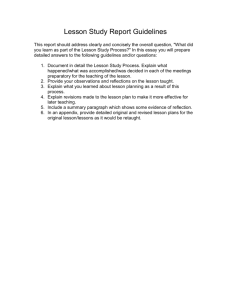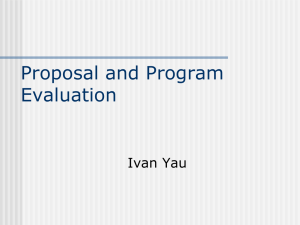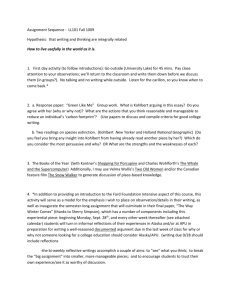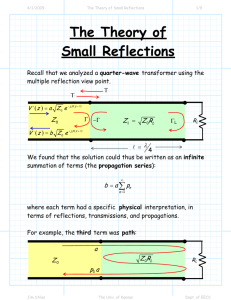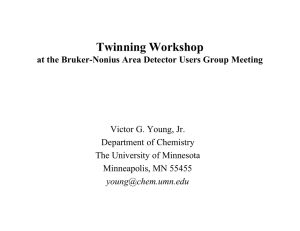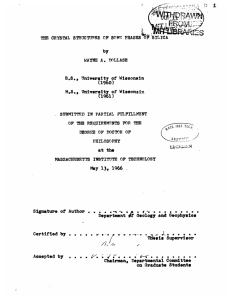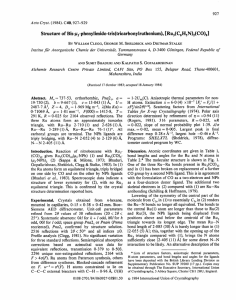CELL NOW program for unit cell determination. Author : George M
advertisement
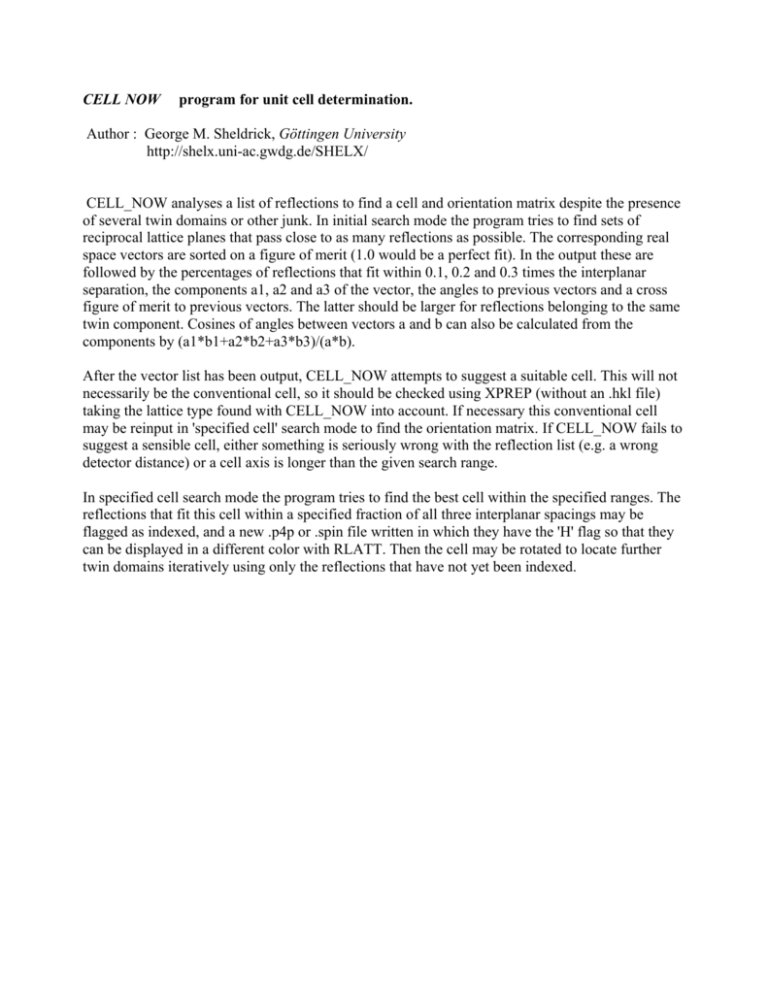
CELL NOW program for unit cell determination. Author : George M. Sheldrick, Göttingen University http://shelx.uni-ac.gwdg.de/SHELX/ CELL_NOW analyses a list of reflections to find a cell and orientation matrix despite the presence of several twin domains or other junk. In initial search mode the program tries to find sets of reciprocal lattice planes that pass close to as many reflections as possible. The corresponding real space vectors are sorted on a figure of merit (1.0 would be a perfect fit). In the output these are followed by the percentages of reflections that fit within 0.1, 0.2 and 0.3 times the interplanar separation, the components a1, a2 and a3 of the vector, the angles to previous vectors and a cross figure of merit to previous vectors. The latter should be larger for reflections belonging to the same twin component. Cosines of angles between vectors a and b can also be calculated from the components by (a1*b1+a2*b2+a3*b3)/(a*b). After the vector list has been output, CELL_NOW attempts to suggest a suitable cell. This will not necessarily be the conventional cell, so it should be checked using XPREP (without an .hkl file) taking the lattice type found with CELL_NOW into account. If necessary this conventional cell may be reinput in 'specified cell' search mode to find the orientation matrix. If CELL_NOW fails to suggest a sensible cell, either something is seriously wrong with the reflection list (e.g. a wrong detector distance) or a cell axis is longer than the given search range. In specified cell search mode the program tries to find the best cell within the specified ranges. The reflections that fit this cell within a specified fraction of all three interplanar spacings may be flagged as indexed, and a new .p4p or .spin file written in which they have the 'H' flag so that they can be displayed in a different color with RLATT. Then the cell may be rotated to locate further twin domains iteratively using only the reflections that have not yet been indexed.



